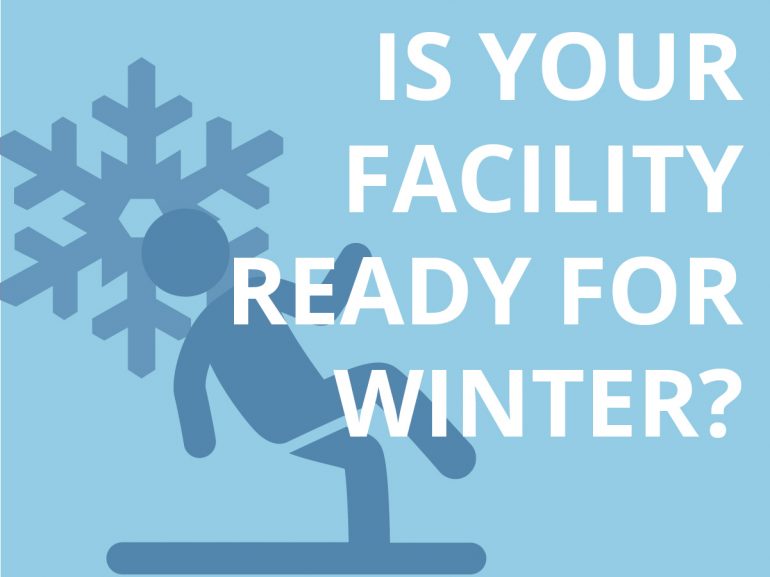Winter Weather Advice and Implications of OSHA’s Walking-Working Surfaces Rule
The inevitable winter months are fast approaching. While some people are rejoicing for cooler weather, those operating in northern states know the complications it brings for working conditions. Harsh, winter weather, and the layer of ice it will produce, causes hazardous conditions for crews working outdoors. Ice skating may be a favorite winter activity for many, but let’s leave the skates at home and do what we can to protect employees during the winter months.
What is the risk?
Companies that have outdoor and indoor facilities are likely to see an increase in accidents when the winter rolls in. Employees are still adjusting to walking on slippery surfaces and can easily fall when conditions are beyond their control. Some slips might be harmless, but others can result in severe back injuries or head trauma.
Imagine the parking lot at your facility has a thin layer of ice covering the surface. The walk from any car to the front door might be a short distance. However, if an employee falls and suffers an injury during that walk, their day will be stopped before it even started. Injuries like this can be prevented with simple measures and a bit of planning.
Advice for Winter Weather:
-
Think of seasonal conditions/hazards before they occur
Before the height of winter weather is here, take some time to think of the specific hazards that will affect your facility. Are there doors where employees will be dragging in snow to indoor facilities? Are there front steps that will need to be salted regularly? It won’t be long until the first heavy snowfall of the year, so begin preparing now.
-
Assign staff to maintain hazardous areas
Once you’re aware of the hazards in your facility, assign the responsibility of maintaining those areas to team members. Who will salt the parking lot when it ices over? Who will check doorways to make sure the melted snow isn’t leaving puddles? Talk with key employees and hand over the responsibility of maintaining hazardous areas before the risk is evident.
-
Ensure there are First Aid/CPR certified employees
Having employees in the facility who are first aid/CPR certified is always our recommendation as a best practice. Emergencies can occur at any time and having someone who can provide temporary aid while emergency medical teams arrive could make a significant difference in the outcome of the injury. This principle is even more important with winter weather and hazardous driving conditions. Emergency medical response time can become significantly longer, increasing the possibility of greater damage. Ensuring there are employees present who are first aid/CPR certified provides a protection for other employees when waiting for emergency response to arrive.
How OSHA’s New Walking-Working Surfaces Rule Will Apply
OSHA issued the final rule on Walking-Working Surfaces rule back in November of 2016. While there are many implications, it can specifically increase the likelihood of receiving a citation for improperly correcting hazardous conditions.
“Inspection of walking-working surfaces (§1910.22(d)). The final rule requires that employers inspect walking-working surfaces regularly and as needed and correct, repair, or guard against hazardous conditions;” (view section of standard)
Previously, all citations for failure to guard against iced-over surfaces would have been cited under the General Duty Clause (Section 5A1). The introduction of this rule does not include additional requirements for salting parking lots or drying wet floors, it does provide a specific section that can become a citation. Simply put, the implementation of the Walking-Working Surface rule increases likeliness for citation on insufficient inspections of the areas of concern.
As previously mentioned, winter is approaching quickly and opportunities for avoidable injuries will increase accordingly. Take a small amount of time to identify areas of concern within the facility in which you work. Simple steps of preparation can have significant impact on the safety of the individuals in the organization.
If you have questions about preparing your facility for winter, please contact our Safety Helpline™! Our team of experienced Safety Professionals can guide you in preparing the best solutions for your specific organization.









